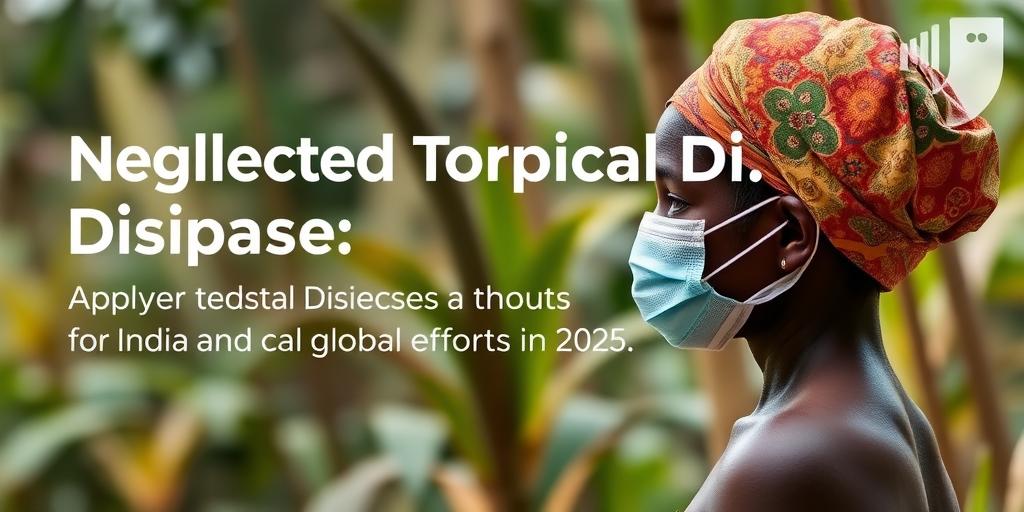Neglected Tropical Diseases: A Focus for India & the World in 2025
Neglected Tropical Diseases (NTDs) represent a group of communicable diseases that affect over a billion people worldwide, particularly in tropical and subtropical regions. These diseases often cause significant disability, morbidity, and mortality, trapping communities in cycles of poverty and hindering socioeconomic development. In 2025, global health initiatives are placing a heightened focus on NTDs, with significant implications for India and other endemic countries.
Understanding Neglected Tropical Diseases
NTDs encompass a variety of parasitic, bacterial, and viral infections. Some of the most prevalent NTDs include:
- Lymphatic Filariasis (Elephantiasis): Caused by parasitic worms transmitted through mosquitoes, leading to severe swelling and disfigurement.
- Onchocerciasis (River Blindness): Caused by the filarial worm Onchocerca volvulus, transmitted by blackflies, resulting in skin disease and visual impairment.
- Schistosomiasis (Bilharzia): Caused by parasitic worms transmitted through contact with contaminated freshwater, leading to organ damage.
- Soil-Transmitted Helminth Infections (STH): Including ascariasis, trichuriasis, and hookworm infections, caused by intestinal worms transmitted through contaminated soil.
- Dengue and Chikungunya: Viral diseases transmitted by mosquitoes, causing fever, joint pain, and other debilitating symptoms.
- Leishmaniasis: Caused by protozoan parasites transmitted by sandflies, resulting in skin lesions or visceral damage.
- Trachoma: A bacterial infection causing blindness.
The Burden of NTDs in India
India bears a significant burden of NTDs, with several of these diseases being endemic in various parts of the country. The impact of NTDs in India is multifaceted, affecting public health, economic productivity, and social well-being. High population density, inadequate sanitation, and limited access to healthcare contribute to the persistence and spread of these diseases.
India has made notable progress in addressing some NTDs. The country has successfully eliminated guinea worm disease and has made significant strides in reducing the burden of lymphatic filariasis and visceral leishmaniasis (kala-azar). However, challenges remain in controlling and eliminating other NTDs, such as dengue, chikungunya, and soil-transmitted helminth infections.
Global Efforts and the 2025 Roadmap
Several global initiatives and partnerships are dedicated to combating NTDs. The World Health Organization (WHO) plays a leading role in coordinating global efforts, setting targets, and providing technical guidance to endemic countries. The WHO’s 2021-2030 roadmap for NTDs outlines ambitious targets for the prevention, control, and elimination of these diseases.
The roadmap focuses on:
- Cross-cutting approaches: Integrate NTD programs with other health interventions.
- Country ownership: Empower endemic countries to lead NTD control and elimination efforts.
- Innovation: Promote research and development of new tools and strategies.
- Collaboration: Foster partnerships between governments, organizations, and the private sector.
Priorities for 2025
In 2025, the focus on NTDs will intensify, with specific priorities for India and the global community:
- Enhanced Surveillance and Data Management: Strengthening surveillance systems to accurately map the distribution and prevalence of NTDs.
- Integrated Vector Management: Implementing comprehensive strategies to control mosquito and sandfly populations.
- Mass Drug Administration (MDA): Conducting MDA campaigns to treat and prevent NTDs in endemic areas.
- Water, Sanitation, and Hygiene (WASH) Interventions: Improving access to clean water and sanitation facilities.
- Community Engagement: Involving local communities in NTD control and prevention efforts.
- Capacity Building: Strengthening healthcare systems and training healthcare workers.
- Research and Development: Investing in research to develop new diagnostics, treatments, and vaccines.
Conclusion
Neglected Tropical Diseases pose a significant threat to public health and socioeconomic development, particularly in countries like India. As we approach 2025, a renewed focus on NTDs is crucial. By implementing evidence-based interventions, fostering collaboration, and empowering endemic countries, we can make substantial progress in controlling and eliminating these diseases, improving the lives of millions of people.
